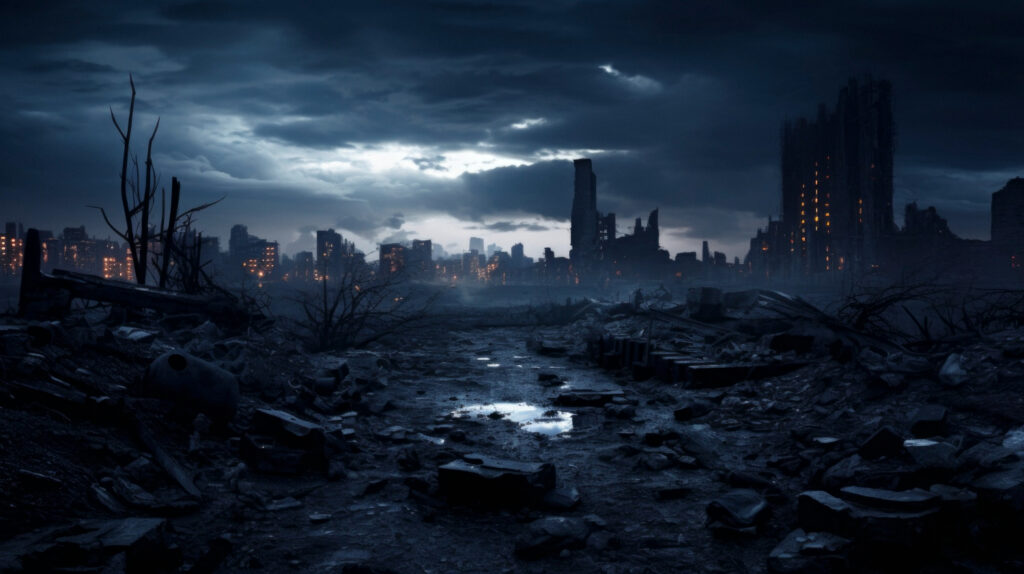Scientists think it’s better if it happens sooner rather than later, but an apocalyptic tsunami is expected to hit the US soon.
According to a recent study, there is a 37 percent risk that a massive earthquake will occur at any time during the next 50 years in the Cascadia Subduction Zone (CSZ) in the Pacific Northwest of the United States by the year 2100.
The Juan de Fuca Plate, one tectonic plate, slides beneath the North American Plate via the CSZ, a fault line off the west coast of North America that is almost 700 miles long.
It runs along the coasts of Washington, Oregon, and California from northern Vancouver Island in Canada to the southern portion of the US West Coast.
Scientists warn that a 100-foot super tsunami would destroy most of the West Coast if an earthquake with a magnitude of 8.0 to 9.0 were to occur today. This is because the coastline would drop by about eight feet in an instant.

According to the Federal Emergency Management Agency (FEMA), a CSZ earthquake alone would kill 5,800 people, and the massive wave it would cause would kill an additional 8,000.
The global team, headed by Virginia Tech academics, also noted that increasing sea levels will only make these ominous forecasts worse over time.
Professor Tina Dura, the lead author of the study, said, “This is going to be a very catastrophic event for the US, for sure. The tsunami is going to come in, and it’s going to be devastating.”
Sea levels are expected to rise by up to two feet by 2100 due to climate change. The destruction and floods in the Cascadia Subduction Zone will probably be worse than anticipated in 2025 if another massive earthquake doesn’t occur before then.
According to FEMA’s 2022 emergency report, the next significant CSZ earthquake would cause over 618,000 buildings to be damaged or destroyed and over 100,000 people to be injured.
The nation would have to pay more than $134 billion for the damage, which would include more than 2,000 schools and 100 vital West Coast facilities.
The West Coast would undergo centuries of change, according to a recent study that was published in the Proceedings of the National Academy of Sciences.
100-year floodplains in California, Oregon, and Washington would be drastically expanded by up to 115 square miles as a result of the earthquake and massive wave.
Areas that are predicted to experience historic floods at least once per 100 years are known as floodplains. More residences, roads, and municipal infrastructure would be placed in hazardous flood zones if those areas abruptly grew by more than 100 miles.
However, the researchers calculated that their flood zone projections might more than quadruple in the worst-case situations, when subsidence (the sinking of the land) is at its peak.
“After the tsunami comes and eventually recedes, the land is going to persist at lower levels,” Dura told BBC Science Focus. “That floodplain footprint is going to be altered for decades or even centuries.”
Due to the increasing amount of time that has elapsed since its last significant seismic event, the Cascadia Subduction Zone is currently a key topic of worry.
January 26, 1700, was the date of the last significant earthquake. According to geologists and historians, the British Columbian settlement of Pachena Bay was destroyed by a massive tsunami caused by an earthquake of magnitude 9.0.
Only 30 minutes after the earthquake, waves as high as 100 feet hit, according to event records, leaving no survivors.
Where the Juan de Fuca Plate is sliding (subducting) beneath the North American Plate is indicated by the CSZ.
This movement isn’t smooth, though. At the fault line, the plates occasionally become trapped together, accumulating stress over many years.
When the stress eventually reaches a breaking point, it unleashes enormous amounts of seismic waves, which we experience as a terrible earthquake.
Unfortunately, because this fault line is located in the Pacific, it also disturbs the ocean, causing enormous waves to emanate from its epicentre.
According to scientific estimates, the CSZ intensifies into a significant earthquake every 400–600 years, which means that the last catastrophic event occurred 325 years ago.
“You can imagine, during the next earthquake, when the land drops down, you’re going to suddenly have to contend with multiple centuries of equivalent sea level rise in minutes,” Dura warned.





